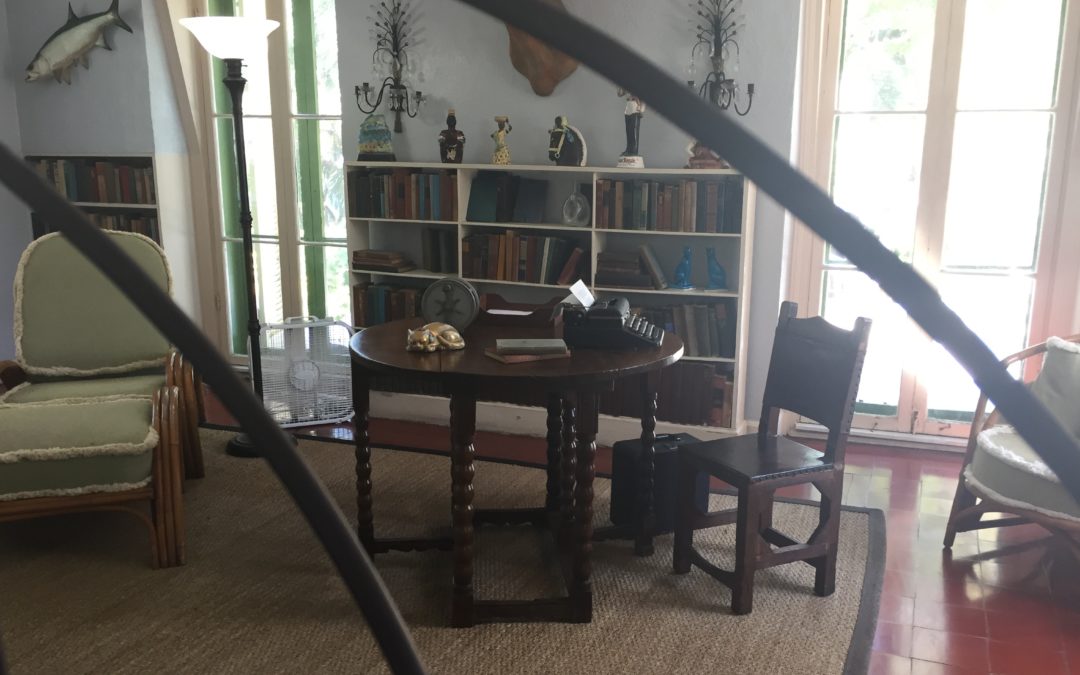I was in Key West, Florida, on a literary pilgrimage to visit the home of hell-raiser, game hunter, cat and wife collector, war hero and writer, Ernest Hemingway.
History of the Hemingway House
Hemingway spent his most focused and productive years at the Key West home he shared with Pauline Pfeiffer, his second wife. Pauline’s uncle Gus gave the Hemingway’s the house as a wedding present in 1931. Built in 1851, the Spanish Colonial style house was constructed from local limestone and was added to over the years. It sits on Whitehead Street, opposite the Key West lighthouse.
Now a national monument and museum, the gardens double as a wedding venue, which is ironic, given that Hemingway never did find the secret to a happy marriage. By the time of his death, he was living with his fourth wife, Mary Welsh.
It was in Key West where Hemingway wrote some of his best-known work: Death in the Afternoon, The Green Hills of Africa, The Snows of Kilimanjaro, To Have and Have Notand For Whom the Bell Tolls.
Writing Routine
When he was working on a book or short story, Hemingway got up at first light and aimed to complete 700 words, or write until midday, whichever came first. Hemingway’s prose seems effortless, but he’d learnt his trade working as a journalist. He knew how to craft and polish, as well as write to a deadline. It was Hemingway who famously said, ‘the only kind of writing is rewriting’.That quote is found in his memoir, A Moveable Feast, which tells the story of his life and work in Paris in the 1920’s.
A Room of his own and an Army of Staff
Hemingway locked himself away to write in a separate building. His upstairs room, with a view of the tropical garden, is the perfect hideaway, that many of us who work from home can only dream about. And while Hemingway was busy writing, other people took care of the daily chores. The family were wealthy enough be able to afford a staff of six servants to cook, clean, and take care of the children.
Complex Personality
Hemingway spent his evenings in the bars of Key West and would get so drunk that he had to find his way home was by the beacon on the Key West lighthouse. Somehow, he managed to get himself up in the morning and be productive.
Perhaps it was only Hemingway’s family who knew the truth about his larger than life personality. To the world, he embodied physical strength with intellect. Yet, that was a myth. After he left Key West his life began to unravel. In his later years, he was beset by psychological and psychiatric problems, including bi-polar disorder.
The writer and amateur boxer who had won the Nobel Prize for literature lost the fight to overcome his inner demons, and his suicide was a shock to those who idolised him. He was, in the end, only human after all.
Sad though his story is, let us not forget the enormous body of work Hemingway left behind and his contribution to literature.
Where Do You Write?
If you’d like to promote your book by sharing your writing routine, where and how you write, give me a shout. How I Write is a new series on my blog. I’m fascinated at the way those with busy lives manage to carve out their writing time. I’m particularly interested in what helps you, as well as what gets in the way of your writing life.
